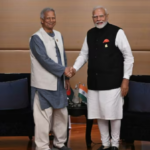‘Odisha needs to bridge the gap between budget estimate and actual expenditure: Ex-CS Jugal Mohapatra
By C. R. Beura
Bhubaneswar, March 2: With the Odisha clocking above 7 per cent growth in the past few years, the size of Odisha’s annual budget has steadily increased. This year state finance minister Niranjan Pujari presented a huge budget of Rs 2.3 lakh crore. This speaks of a healthy fiscal position of the state government, said former chief secretary of Odisha, Jugal Kishore Mohapatra on Thursday.
However, the matter of concern is that the allocated funds are not often fully spent, he added.
Mr Mohapatra, while sharing his vision at a panel discussion on “Value for Money: An Analysis of Odisha State Budget 2023-24,” expressed his concern over the fact that in the last five years funds of Rs 67,000 Cr allocated under different heads remained unspent. There has been a 10-12 per cent gap in the budget estimates and the actual expenditure.
The panel discussion was organised by the Odisha Budget and Accountability Centre (OBAC) here on Thursday.
The consultation urged the authorities for capacity building of the state machinery to sort out systemic and procedural hurdles and set up monitoring mechanisms to achieve hundred percent expenditure of the allocated budget.
He congratulated the state for the increasing proportion of capital expenditure. The increasing capital expenditure that is associated with investment and development spending is an indicator of a progressive economy, Mohapatra added.
Economist Dr. Pravas Mishra expressed concern that the State Budget-2023-24 has little provision to address crucial issues like poor infrastructure and staff crunch in primary healthcare facilities. Though health sector this year received a major allocation i.e. Rs. 16,048 Cr, an increase of about 27% over the previous year, the increase has mainly gone to schemes for creation and expansion of healthcare infrastructure and establishment of medical colleges, which mainly contribute to tertiary healthcare services, he added.
Though Odisha is credited to be one among the few states which formulated separate budgets for agriculture, climate change, child development and nutrition, there should be a proper monitoring system to gauge whether positive changes are effected at the ground level, Mishra pointed out.
SN Mishra, Professor of Emeritus, KIIT University, maintained that the focus of the State Budget is more on the secondary education, whereas enhancing quality of school and pre-school education keeping in view the huge learning loss and dropout rate due to the COVID-19 pandemic received a short shrift.
According to the budget analysis by OBAC, the fund allocation to the Department of Mission Shakti, which is dedicated to strengthening women self help groups, has increased to Rs. 2,554 Cr this fiscal from Rs. 2,000 Cr in the last fiscal. However, the allocation in capacity building of SHGs has decreased by more than 56%. The combined allocation of Rs. 288 Cr for livelihood, skill development and capacity building is far from sufficient to cater to more than 6 lakh SHGs consisting of more than 70 lakh women.
Prof Asha Hans, President, Sansriti, underlined the need for a gender specific and gender sensitive budget to make women self-reliant economically and increase their participation in different sectors. She maintained that the budget should have made provisions to address the increasing rate of crime against women that has increased three-fold in recent years.
Dr. Madhubrata Satapathy, Dept of Economics, BJB Autonomous College, said the state should allocate additional funds through specific programmes and schemes to address the atrocities against women.
It is a good sign that the aspiration of people from the budget has increased with the increase of resources, said Dr. Satyapriya Rath, Addl. Secretary, Dept of Finance. He urged people to provide quality inputs which would be included in the climate budget.
Among others, economists, academicians, agriculturists, students, farmer leaders, development practitioners and senior citizens’ representatives participated in the consultation programme.





